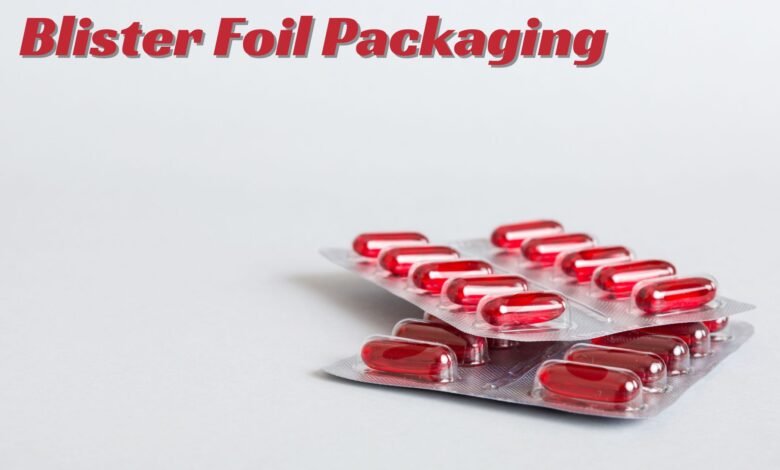
In today’s fast-paced world, product packaging plays a crucial role in not only preserving the integrity of goods but also in captivating the attention of consumers. One such innovative packaging solution that has gained significant traction is Blister Foil Packaging. Let’s delve into what makes blister foil packaging a standout choice for product protection and presentation.
Understanding Blister Foil Packaging
Blister foil packaging is a specialized form of packaging that involves the use of a thin sheet of aluminum or plastic adhered to a backing material, typically cardboard or plastic. This creates a sealed container that houses and protects individual items, providing a barrier against moisture, oxygen, and other environmental factors that could compromise product quality.
The Benefits of Blister Foil Packaging
Enhanced Product Visibility and Appeal
With blister foil packaging, products are prominently displayed, allowing consumers to see the contents clearly. This transparency enhances product visibility on store shelves, enticing potential buyers with a clear view of what they are purchasing.
Improved Product Protection
The sturdy construction of blister foil packaging provides a protective barrier against physical damage, contamination, and tampering. Whether it’s delicate pharmaceuticals or small electronic components, blister packaging ensures that items reach consumers in pristine condition.
Convenient and User-Friendly Design
Blister packs are designed for ease of use, featuring individual compartments that hold products securely in place. This design not only simplifies inventory management but also enhances user experience by making it effortless to access and store items.
Customization Options
Blister foil packaging offers versatility in design, allowing manufacturers to tailor packaging solutions to fit specific product requirements. From different shapes and sizes to branding elements and promotional inserts, customization options are virtually limitless, enabling brands to stand out in a crowded marketplace.
Applications of Blister Foil Packaging
Blister foil packaging finds widespread application across various industries, including pharmaceuticals, consumer electronics, cosmetics, and food and beverage. Its versatility makes it suitable for packaging a wide range of products, from pills and tablets to batteries and memory cards.
How Blister Foil Packaging Works
The process of blister foil packaging involves several steps, starting with the formation of individual blister cavities on the packaging material. These cavities are then filled with the product, and a layer of foil is heat-sealed over the top to create a secure enclosure.
Types of Products Suitable for Blister Foil Packaging
Blister foil packaging is ideal for items that require protection from moisture, light, and air exposure. Common examples include pharmaceuticals, vitamins, batteries, chewing gum, and small electronic devices.
Environmental Impact and Sustainability
As consumer demand for sustainable packaging solutions continues to grow, manufacturers are exploring eco-friendly alternatives to traditional blister foil materials. Biodegradable plastics and recyclable materials offer promising options for reducing environmental impact and promoting sustainability in packaging practices.
Quality Assurance and Regulations
The production and use of blister foil packaging are subject to stringent quality control measures and regulatory standards to ensure product safety and compliance. Manufacturers must adhere to guidelines established by regulatory authorities governing packaging materials and processes.
Cost-Effectiveness
While blister foil packaging may initially involve higher production costs compared to conventional packaging methods, its benefits in terms of product protection, visibility, and consumer appeal often outweigh the initial investment. Moreover, advancements in manufacturing technologies continue to drive down production costs, making blister foil packaging more accessible to businesses of all sizes.
Future Trends
Looking ahead, the future of blister foil packaging is marked by innovations aimed at further enhancing functionality, sustainability, and user experience. From biodegradable materials to smart packaging solutions incorporating RFID technology, the evolution of blister foil packaging continues to shape the landscape of modern packaging practices.
Frequently Asked Questions (FAQs)
1. What are the primary materials used in blister foil packaging?
Blister foil packaging typically utilizes thin sheets of aluminum or plastic, which are heat-sealed to backing materials such as cardboard or plastic.
2. Is blister foil packaging suitable for perishable food items?
Blister foil packaging is more commonly used for non-perishable items such as pharmaceuticals, electronics, and consumer goods. However, specialized variants may be suitable for certain food products.
3. How does blister foil packaging contribute to product tamper resistance?
The secure sealing mechanism of blister foil packaging provides a tamper-evident barrier, helping to safeguard products against unauthorized access and tampering.
4. Can blister foil packaging be recycled?
Depending on the materials used, blister foil packaging may be recyclable. However, consumers should check with local recycling facilities to determine the recyclability of specific packaging materials.
5. Are there any regulatory requirements for blister foil packaging?
Yes, blister foil packaging must comply with regulatory standards set forth by governing bodies to ensure product safety, quality, and environmental responsibility.
Final Words
Blister foil packaging offers a winning combination of functionality, aesthetics, and sustainability, making it a preferred choice for businesses seeking to enhance their product packaging and consumer engagement. As the demand for innovative packaging solutions continues to rise, blister foil packaging remains at the forefront of industry trends, poised to shape the future of packaging innovation and sustainability.




